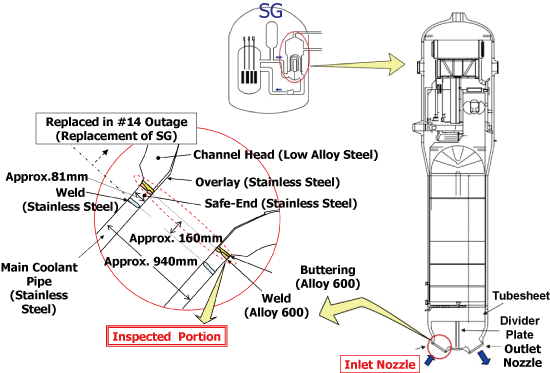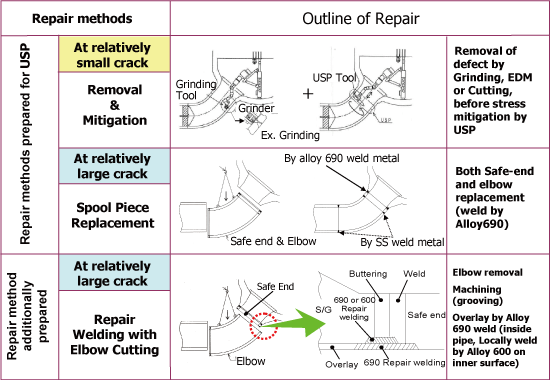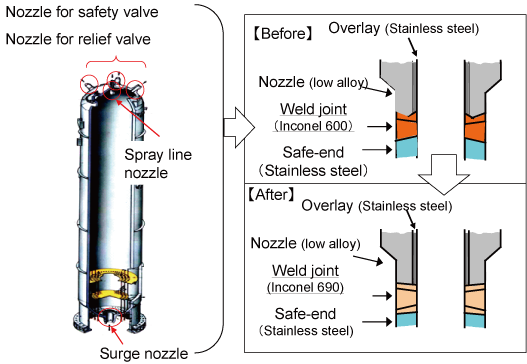| Vol.2 No.2 |
||||||||||||||||||||||||||||||||||||||||||||||||||||||||||||||||||||||||||||||||
| General Articles | ||||||||||||||||||||||||||||||||||||||||||||||||||||||||||||||||||||||||||||||||
| Vol.2, No.3, GA14 | ||||||||||||||||||||||||||||||||||||||||||||||||||||||||||||||||||||||||||||||||
|
||||||||||||||||||||||||||||||||||||||||||||||||||||||||||||||||||||||||||||||||
|
Shinro Hirano1, Kenichi Hamasaki1, and Koji Okimura2
1 Nuclear Power Division, the Kansai Electric Power co.,Inc 2 Kobe Shipyard & Machinery Works, Mitsubishi Heavy Industries, Ltd. |
||||||||||||||||||||||||||||||||||||||||||||||||||||||||||||||||||||||||||||||||
1. IntroductionThe PWSCC issue of Alloy 600 is as stated in the last issue (E-JAM General Articles Vol.2, No.2, GA13, "Maintenance Activities for Alloy 600 in PWR Plants <Part 1> "). In paper here discussed, we would like to introduce activities to repair SG inlet nozzle welds, Pressurizer nozzle welds and their actual cases. 2. PWSCC indication in SG inlet nozzleIn Japan, 15 PWR plants have Alloy 600 weldments to join the SG inlet/outlet nozzles with main coolant pipes. Initially the welds were planned to be subject of an ultrasonic shot peening (USP) procedure for residual stress improvement as a preventive maintenance measure against PWSCC. Figure 1 shows the representative areas in Mihama Unit-2.
Figure 1 Situation of SG Nozzles (Mihama Unit-2) Prior to the USP procedure, an eddy current test (ECT) was performed to confirm the integrity of the surfaces of the Alloy 600 weld. As results, PWSCC indications were detected at 21 nozzles (all of them in the inlet nozzles of the hot legs) in 9 plants. Figure 2 shows the status of PWSCC indications in Alloy 600 SG nozzles of Japanese PWR plants.
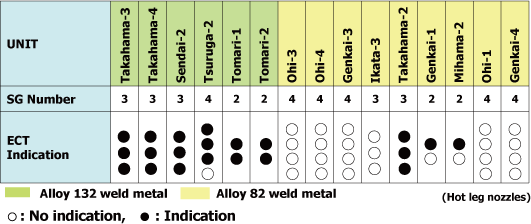 Figure 2 Status of PWSCC indication in Alloy 600 SG Nozzles Figure 3 shows the representative PWSCC indications detected in Mihama Unit-2. Several axial intergranular surface-breaking cracks were detected on the surface of the Alloy 600 area, and by performing destructive tests by taking samples it was confirmed that these defects are PWSCC.
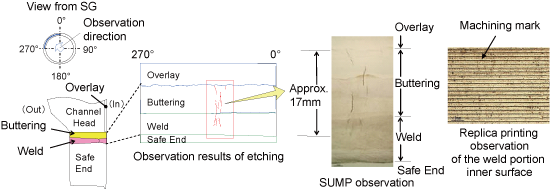 Figure 3 Sample of PWSCC indication in Alloy 600 SG Nozzles (Mihama Unit-2) 3. Repair technologies for SG inlet nozzleTwo repair methods in case of detecting indications during the USP operation were prepared.
However, after detection of PWSCCs in Mihama Unit-2, PWSCCs were also detected in many other plants, thus the following technique was developed to achieve low radiation exposure in a short working period compared with the spool piece replacement.
As mentioned before, considering restrictions such as the size of a defect, frequency, and purpose of the defect study, the applied repair methods are shown in Figure 4.
Figure 4 Applicable Repair Methods for SG nozzle 3.1 Spool piece replacement (See Figure 5)In Mihama Unit-2 where the defects were initially confirmed, this repair method was applied to study the defect samples.
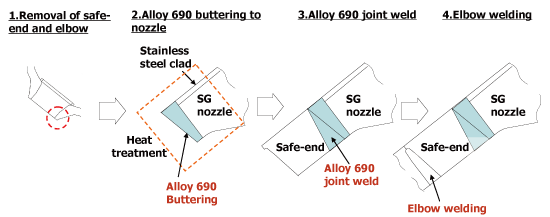 Figure 5 Repair Technologies of Spool Piece Replacement 3.2 Removal and mitigation (See Figure 6)This method is applied to the plants where defects are small in size and number.
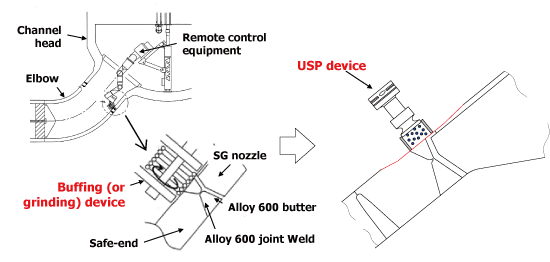 Figure 6 Repair Technologies of Defect Removal and Mitigation 3.3 Repair welding with elbow cutting (See Figure 7)This repair method was applied to many plants after application to Mihama Unit-2 because this method can be performed as preventive maintenance in low radiation exposure and in a short working period compared with the spool piece replacement. In application of this method, the post weld heat treatment is applied only to the narrow range (the smallest value between the thickness value or 50mm) obtained by adjusting the soaking range (three times as large as the thickness) required by the existing technical criteria. Then, its technical justification and conformance to the technical criteria were verified.
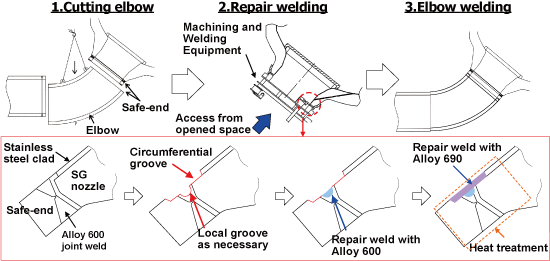 Figure 7 Repair Technologies of Repair Welding with Elbow cutting 3.4. Implementation status of the preventive maintenance for the SG inlet nozzleThe implementation status of the SG inlet nozzle repair is shown in Table 1. The preventive maintenance activities were performed for all Alloy 600 SG outlet and inlet nozzles in PWR plants in Japan. In future, integrity of this area is inspected based on the inspection program (in-service inspection). Table 1 Status of SG nozzle welds Repair
4. Implementation status of the preventive maintenance for the pressurizer nozzleFor pressurizer nozzle welds, in response to the incident of defects due to PWSCC at the relief valve nozzle and the safety valve nozzle of Tsuruga Unit-2 in 2003 (See Figure 8) and many incidents of defects at SG inlet nozzles after 2007, the Kansai Electric Power co., Inc performed spool piece replacements as the preventive maintenance measure (Figure 9) and it is scheduled to complete in 2011.
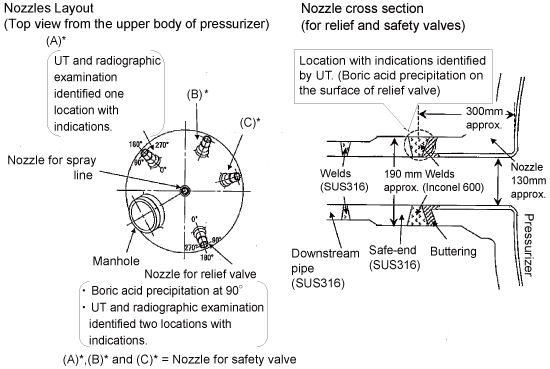 Figure 8 Leakage incident in PZR relief Valve line at Tsuruga-2
Figure 9 Preventive maintenance for PZR Nozzle Welds |






